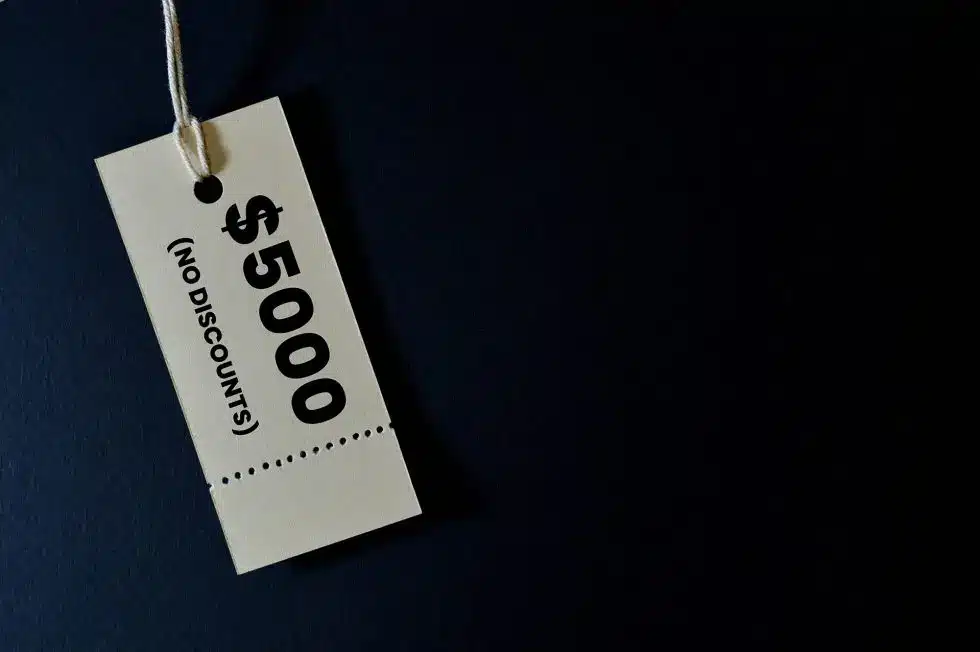Now a lot of people say that one of the biggest ways you lose profit is by not charging enough for your service.
And for sure, there’s a lot of truth in that. Especially if your price is really low.
But what a lot of people don’t talk about is how much you lose if your price is too high.
Nobody’s really teaching you how to know if your price is too high either.
They’re just saying ‘increase your prices, increase your prices’ not really appreciating the damage that can do, and how much money it can cost you in the long run.
Now there are actually two ways to know if your price is too high.
And I’m going to teach you both right now.
So the first of the two ways to know if your price is too high is to look at two very key metrics.
Your offer percentage, and your offers close percentage.
The offer percentage is the percentage of calls that show up who are a good fit and you offer your product to. i.e. it suits what they need, and they can afford it
Now this should be between 60% and 80%. So you make an offer to between 60% of your calls that show up and 80%.
If it’s lower than 60%, then your marketing could be off, your sales team could be playing it too safe to make their close rate look better, or your program just isn’t in alignment with what most people need.
If it’s higher than 80%, then you’re probably making offers to people who aren’t a good fit.
Or you’re filtering out too many applications and you’re losing some good potential clients there.
Your offers close percentage is the number of the people you’ve made an offer to close.
So it’s different to your overall close rate. Which is the percentage of all calls that close.
Your offers close rate is much more useful, as it’s measuring your ability to close people who are a good fit and who can afford what you do.
Your offers close rate should ideally be between 25% and 40%.
Depending on the volume of calls you have, this number can vary a lot. But if you’re taking a lot of calls, then this number should be fairly steady.
Now there’s a couple of factors here. Not just cost. But obviously closing ability.
So this is assuming your closing ability is pretty good. And pretty consistent.
If someone’s a terrible closer, then their close rate is always going to be low regardless of price.
If you’ve got that problem by the way, give me a call. I can help you with that.
But assuming your closing ability is good. If your offers close rate is consistently below 25%, then your product is probably too expensive.
And if it’s consistently above 40%, that’s great! BUT, the chances are, you can probably increase your price incrementally as the likelihood is, your price is too cheap.
The second way:
Ok, so here’s how to get your pricing absolutely spot on without losing clients or losing money.
This is by far the most accurate method and is very well tried and tested.
Now my business partner Alex learned this method from his time in the visitor attraction industry.
And it’s how many visitor attractions optimize their ticket pricing.
And this process works well for anything, no matter how low-ticket or high-ticket it might be.
The process is called banding.
Now if you were to go up to someone on the street and ask someone how much they would pay for something, most people would low-ball it.
Because they don’t want to get tricked into paying more.
So straight up asking people what the price should be doesn’t work.
However, asking people who’ve already bought the product and used it what the highest price they would pay for it, and the lowest price they think it’s worth, gives you a much more useful set of numbers.
Especially when you ask a lot of people.
So what you need to do, is to ask as many of your clients as possible, what the highest price they would pay for your product would have been. And the lowest they think it’s worth.
And you want to map on a graph those two numbers for everyone.
What you end up with are what we call two clusters of data.
The upper cluster and the lower cluster.
And if you draw a line in the average middle between those two clusters of data, you will get a very accurate number for what your price should be.
Now, bear in mind, it’s not going to be a nice round number. It’s going to be something like $5381 dollars or something.
Which might not work well for you with your marketing and sales.
So by all means round it up a little bit to a prettier number.
But the closer your price is to that number, the less profits you’ll be losing due to pricing.
I hope you found that useful. Check back soon for more useful content.
Alex Smale

